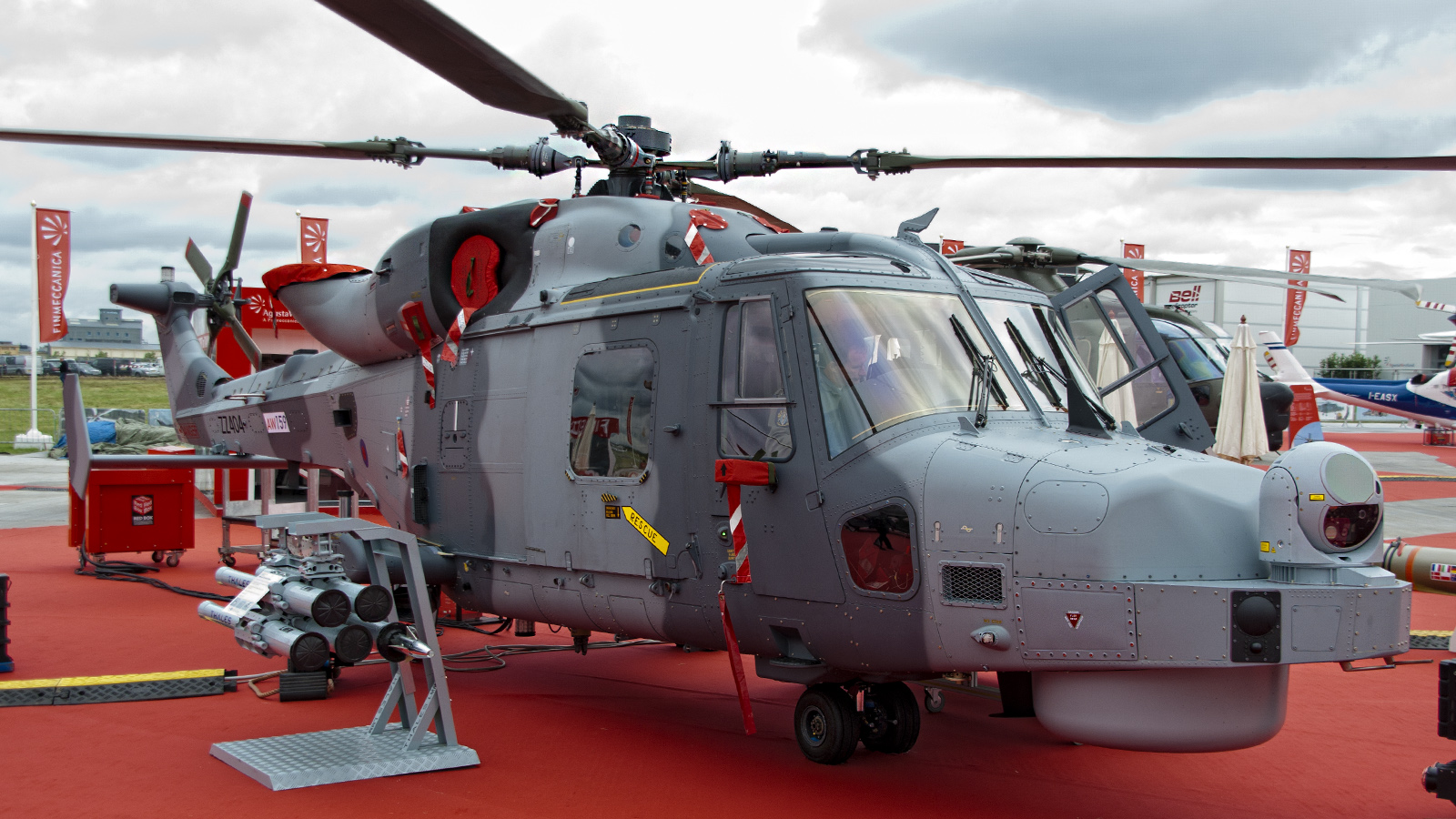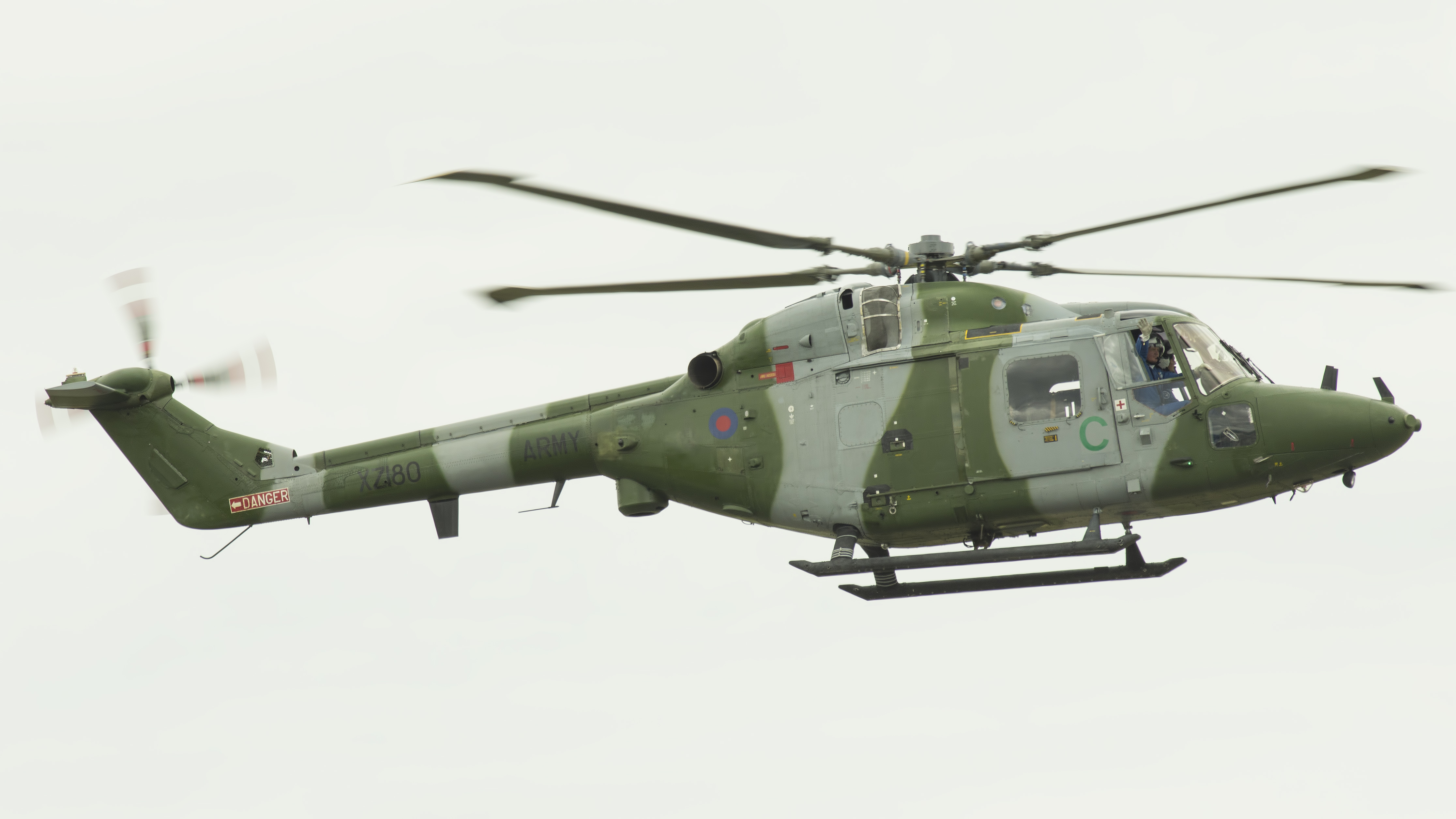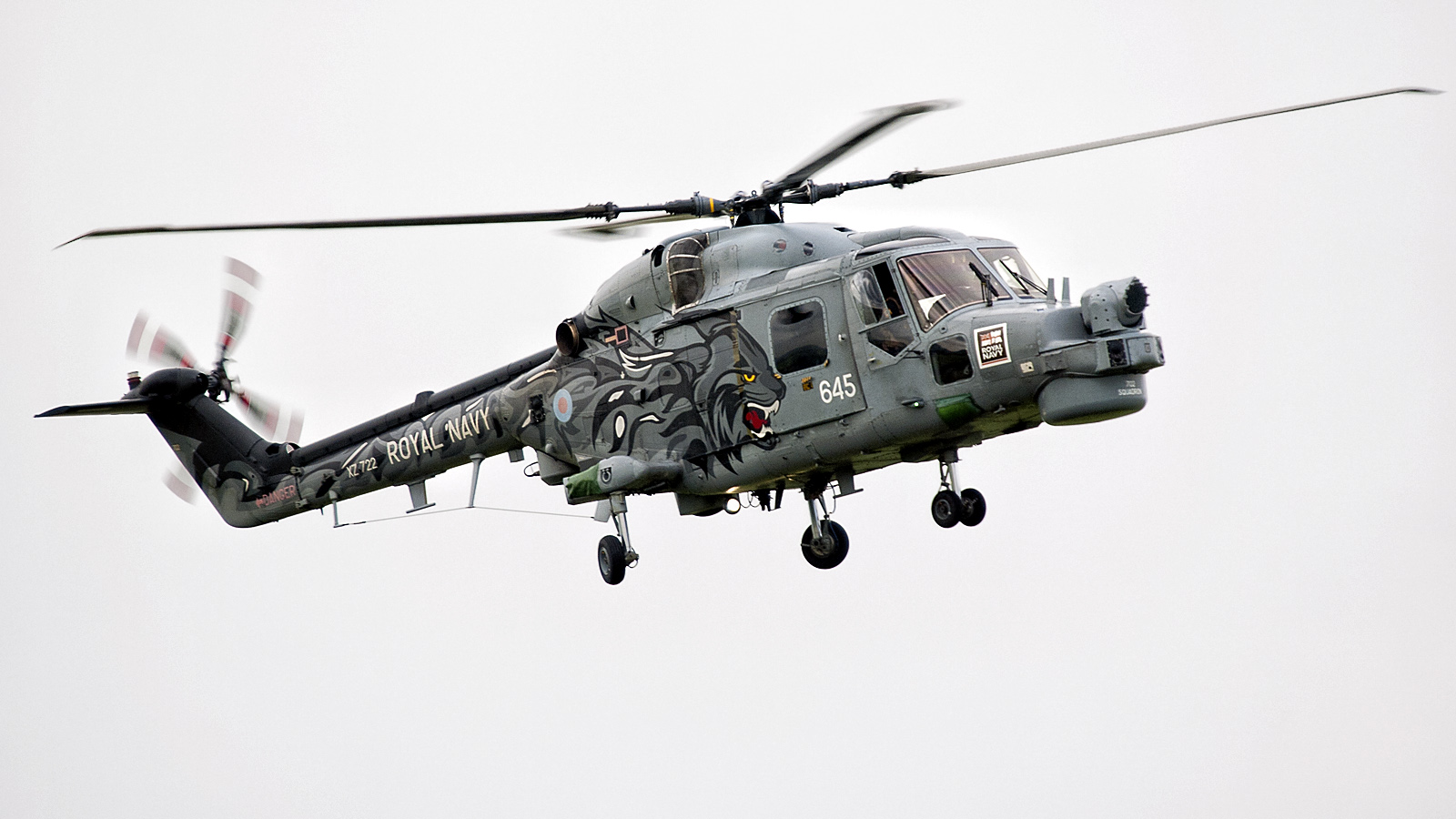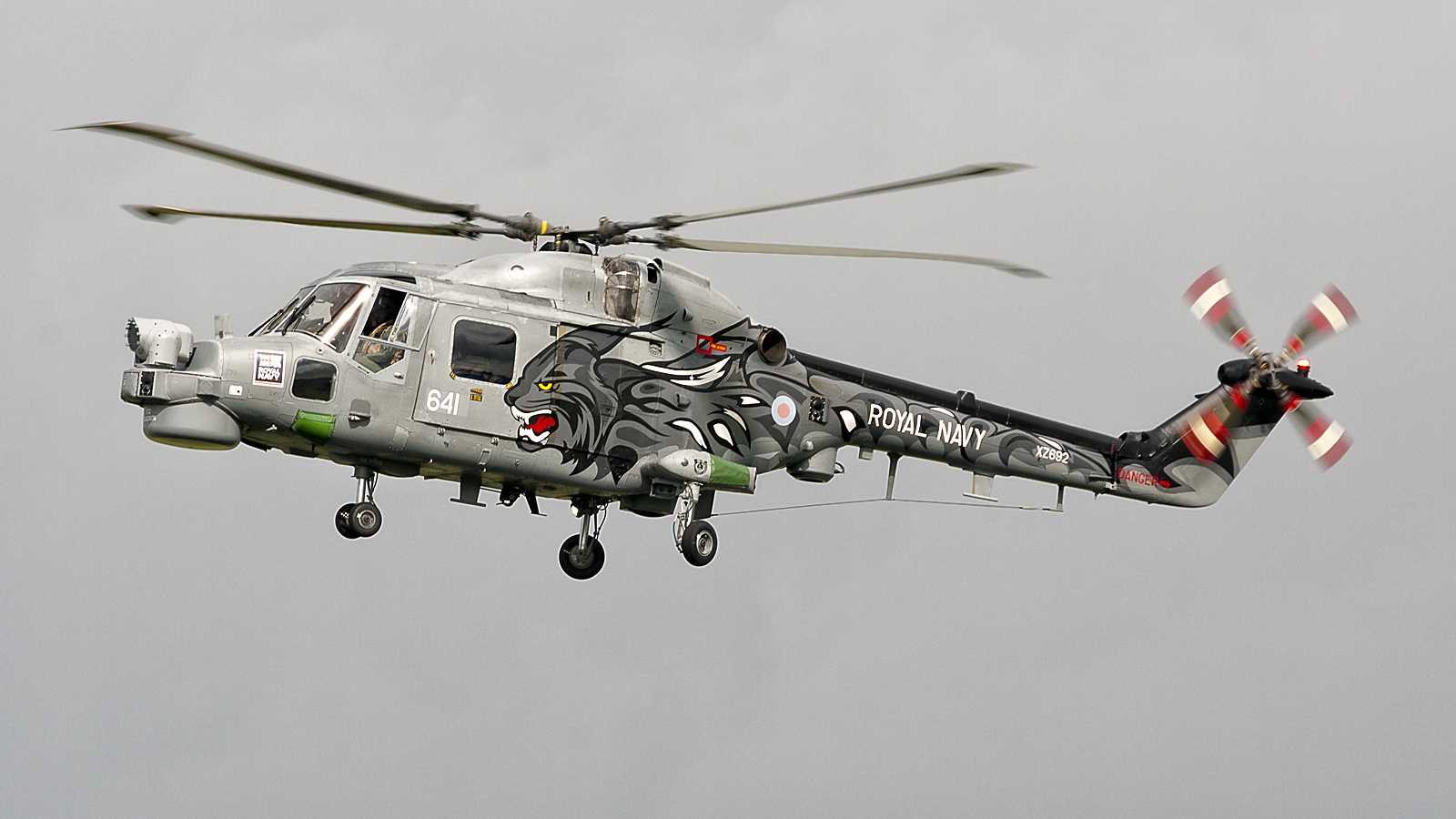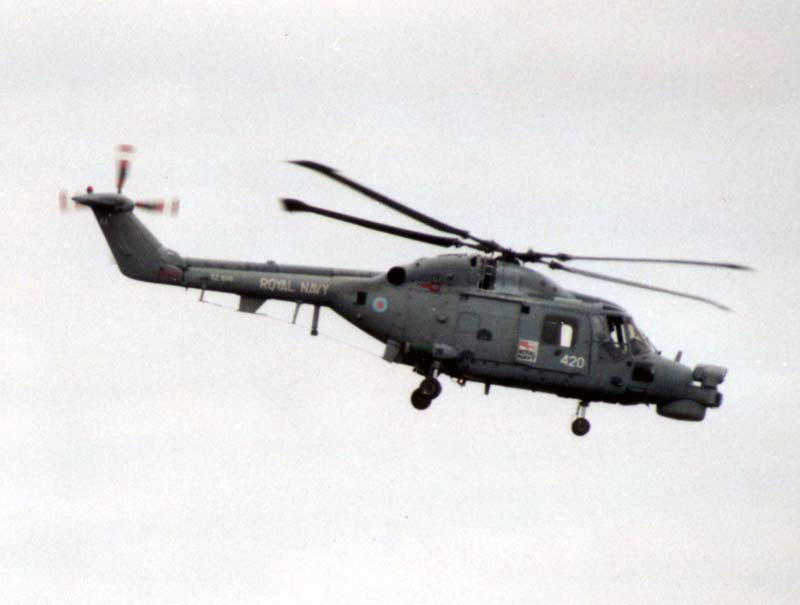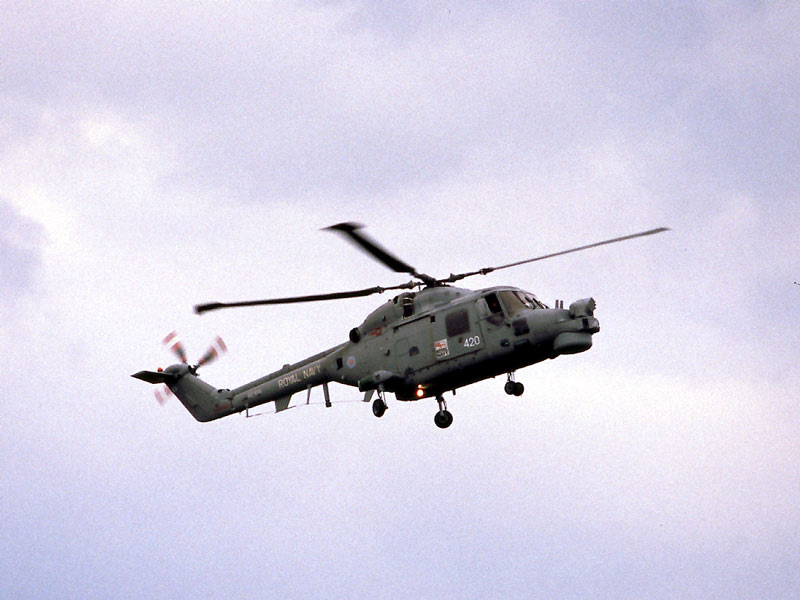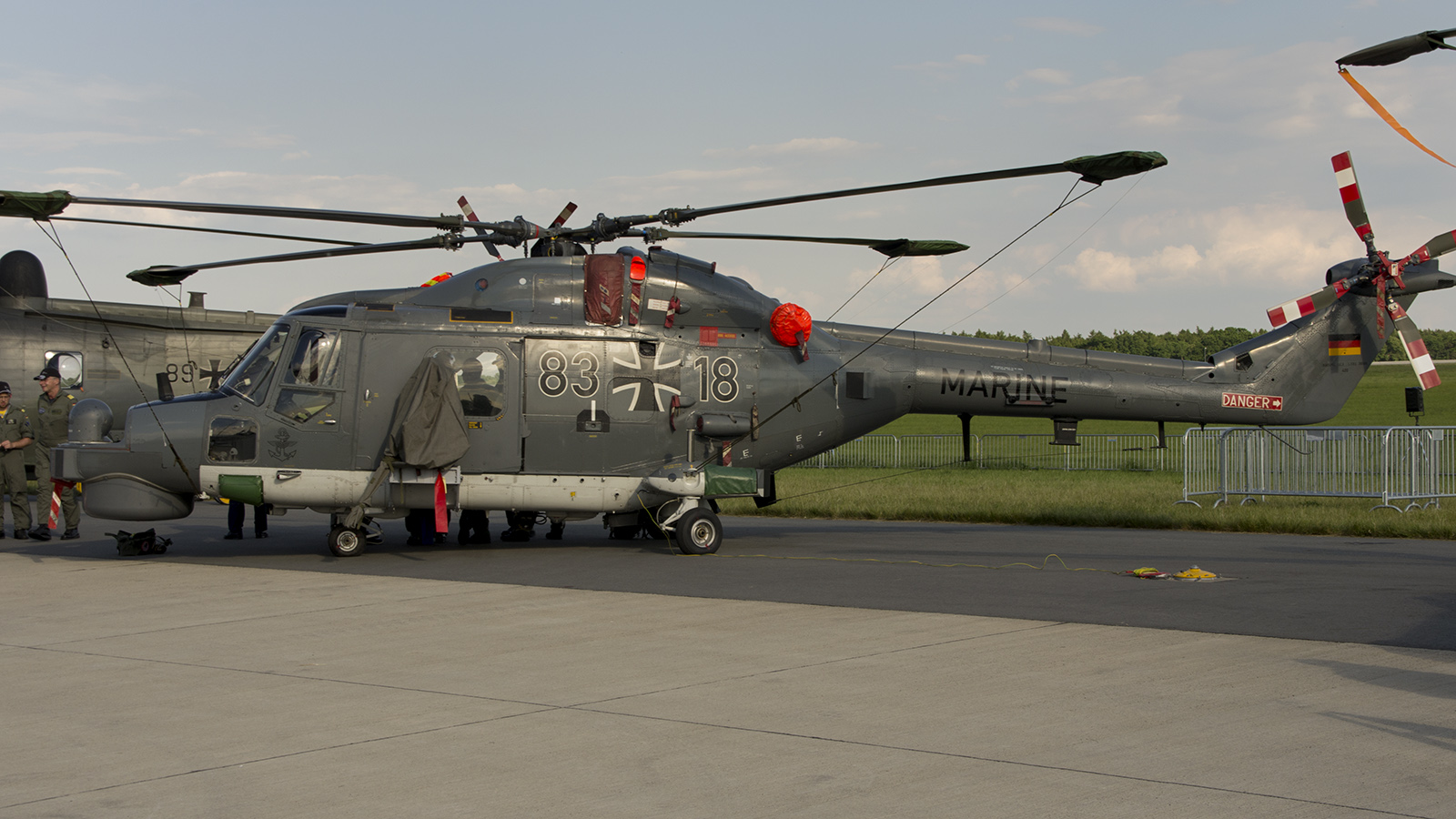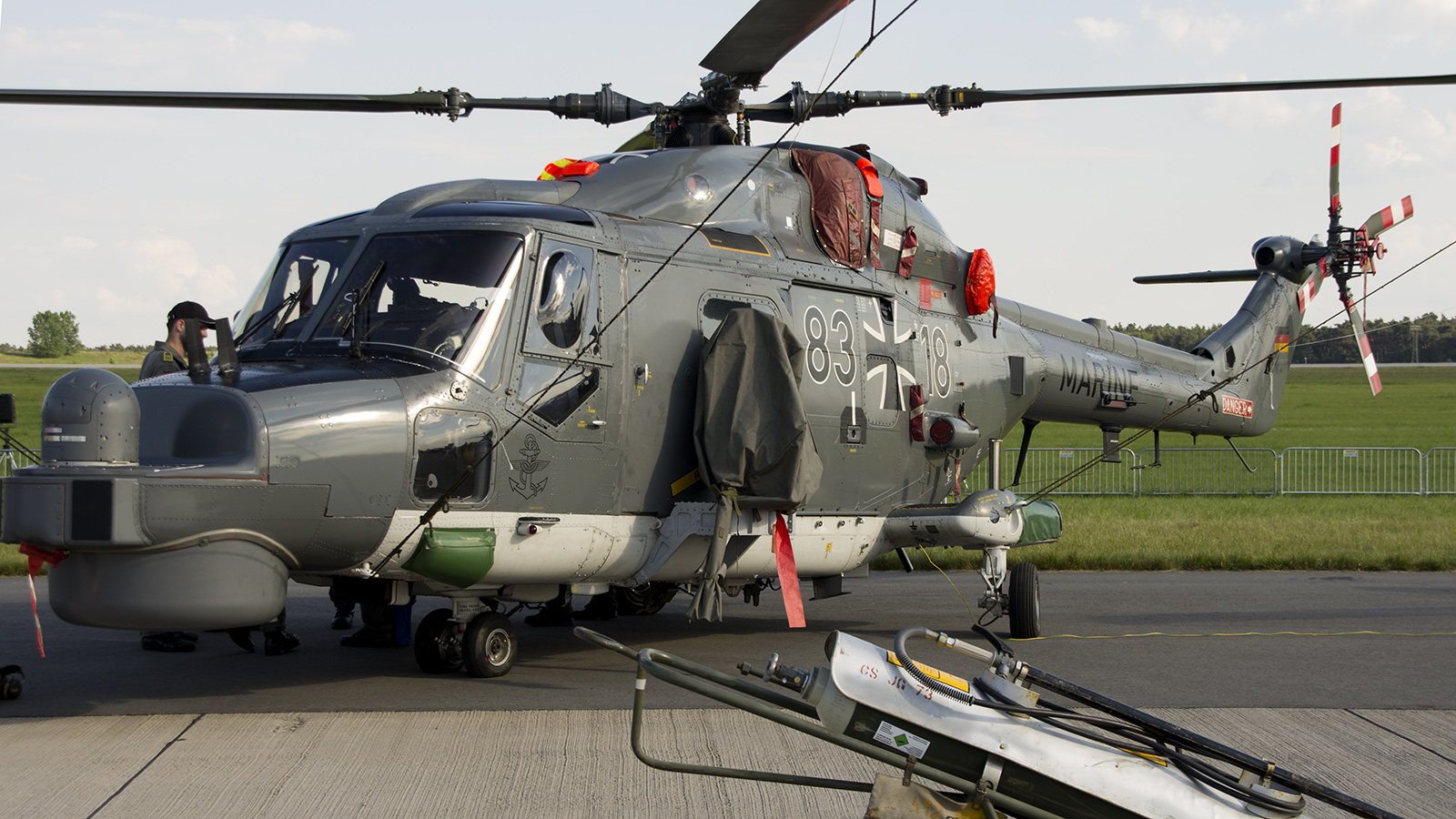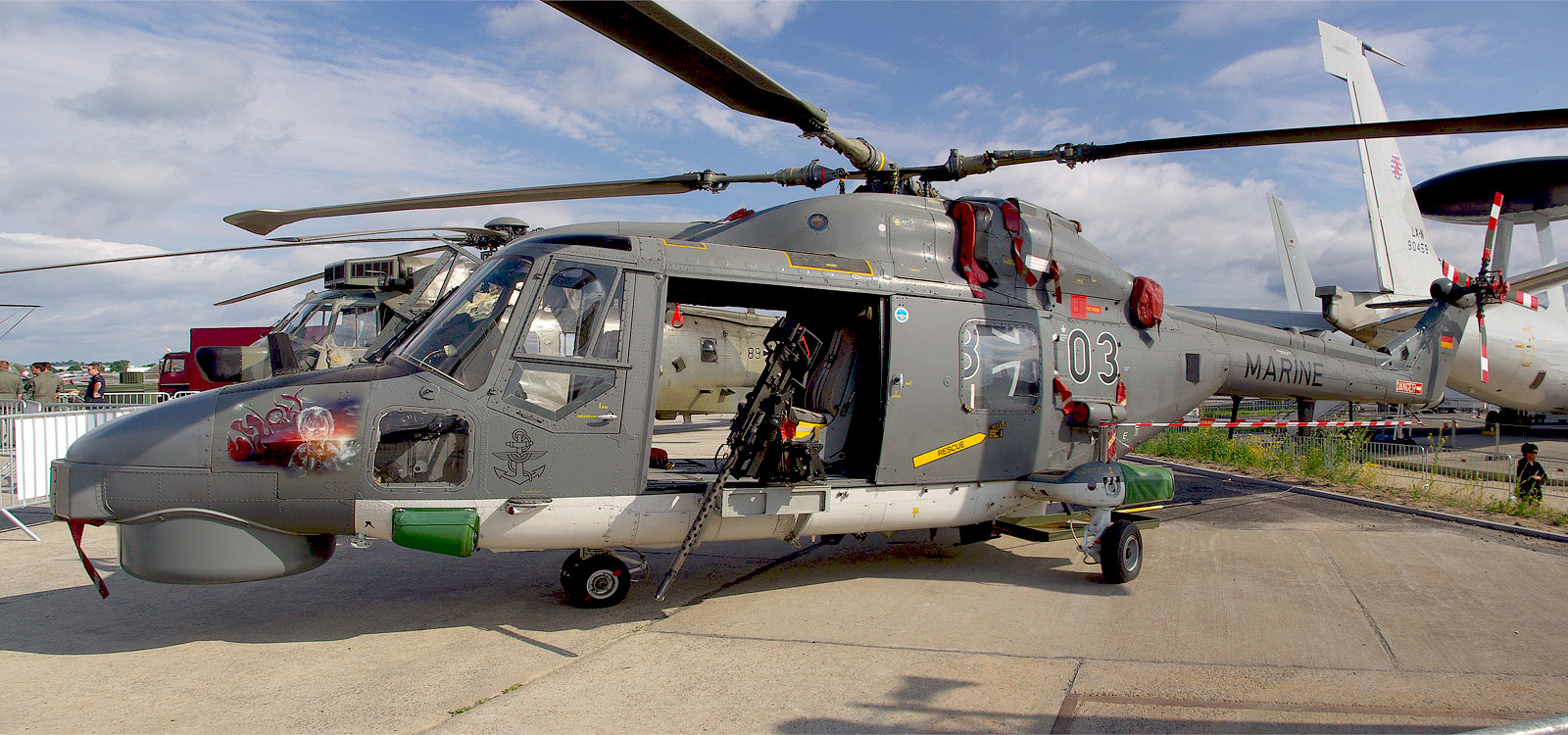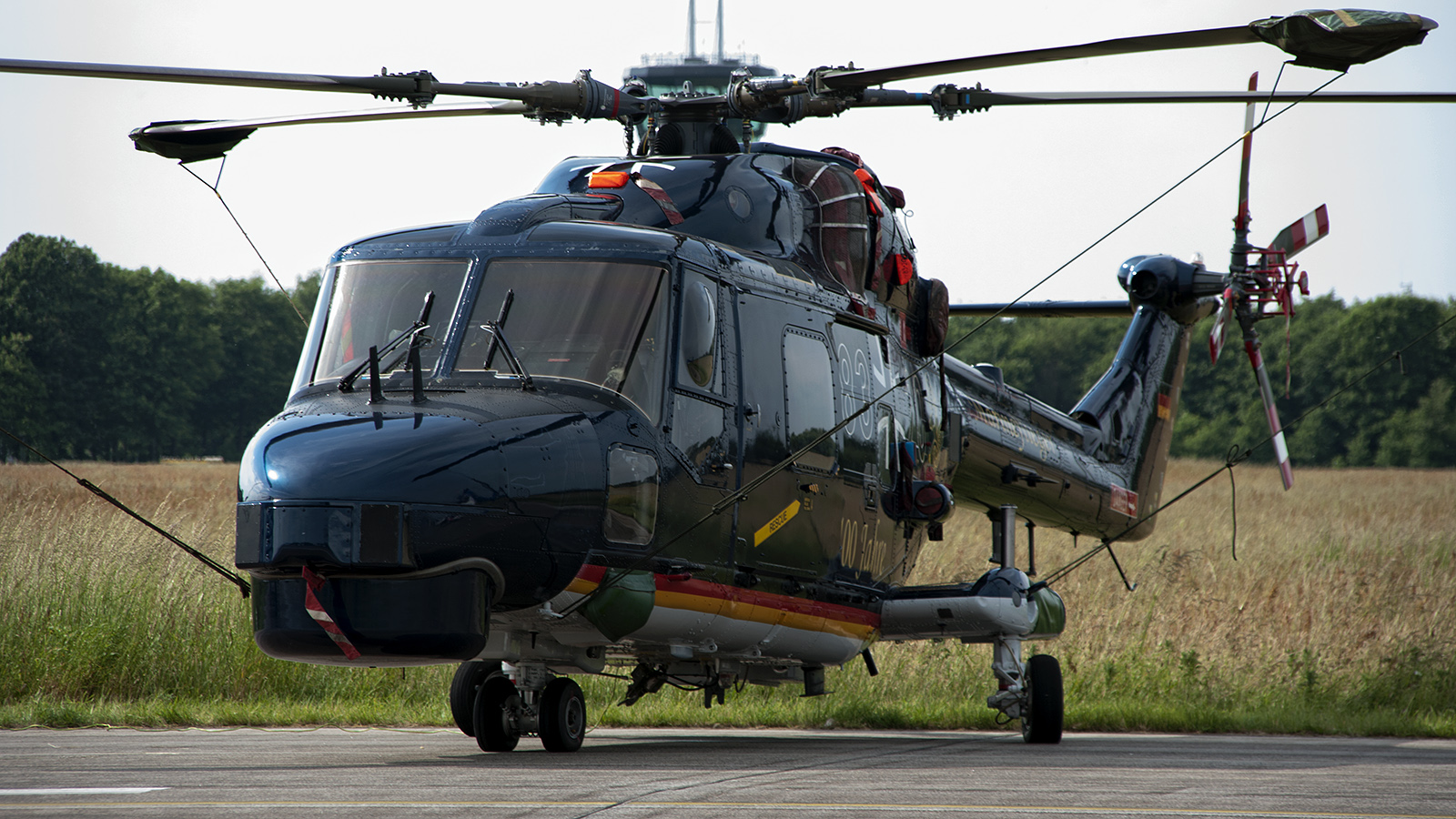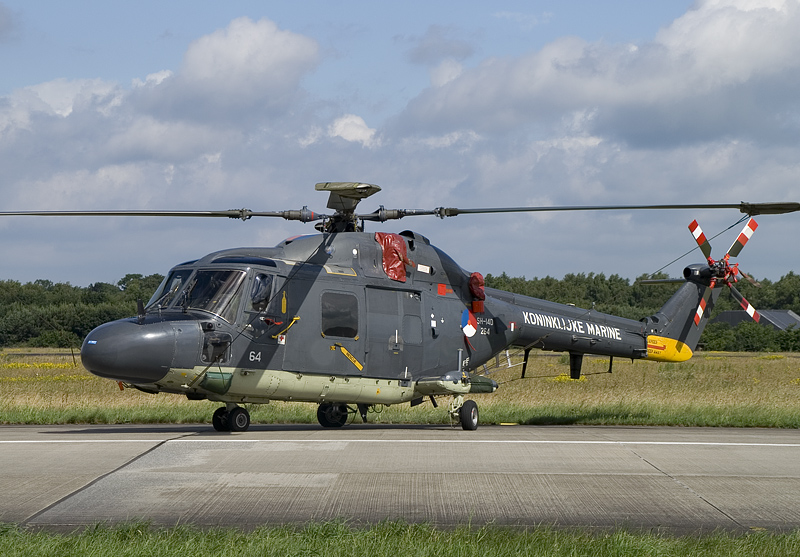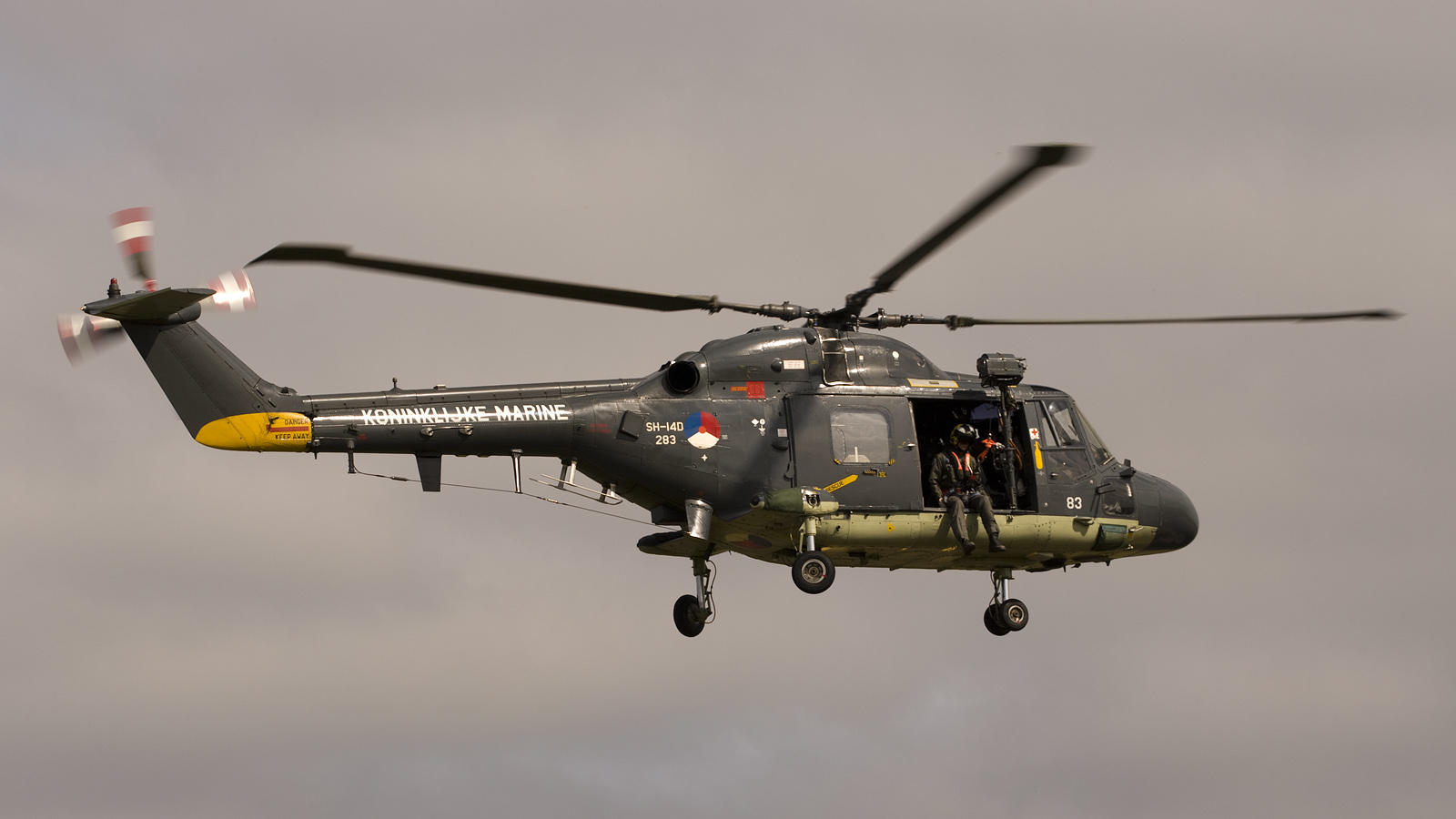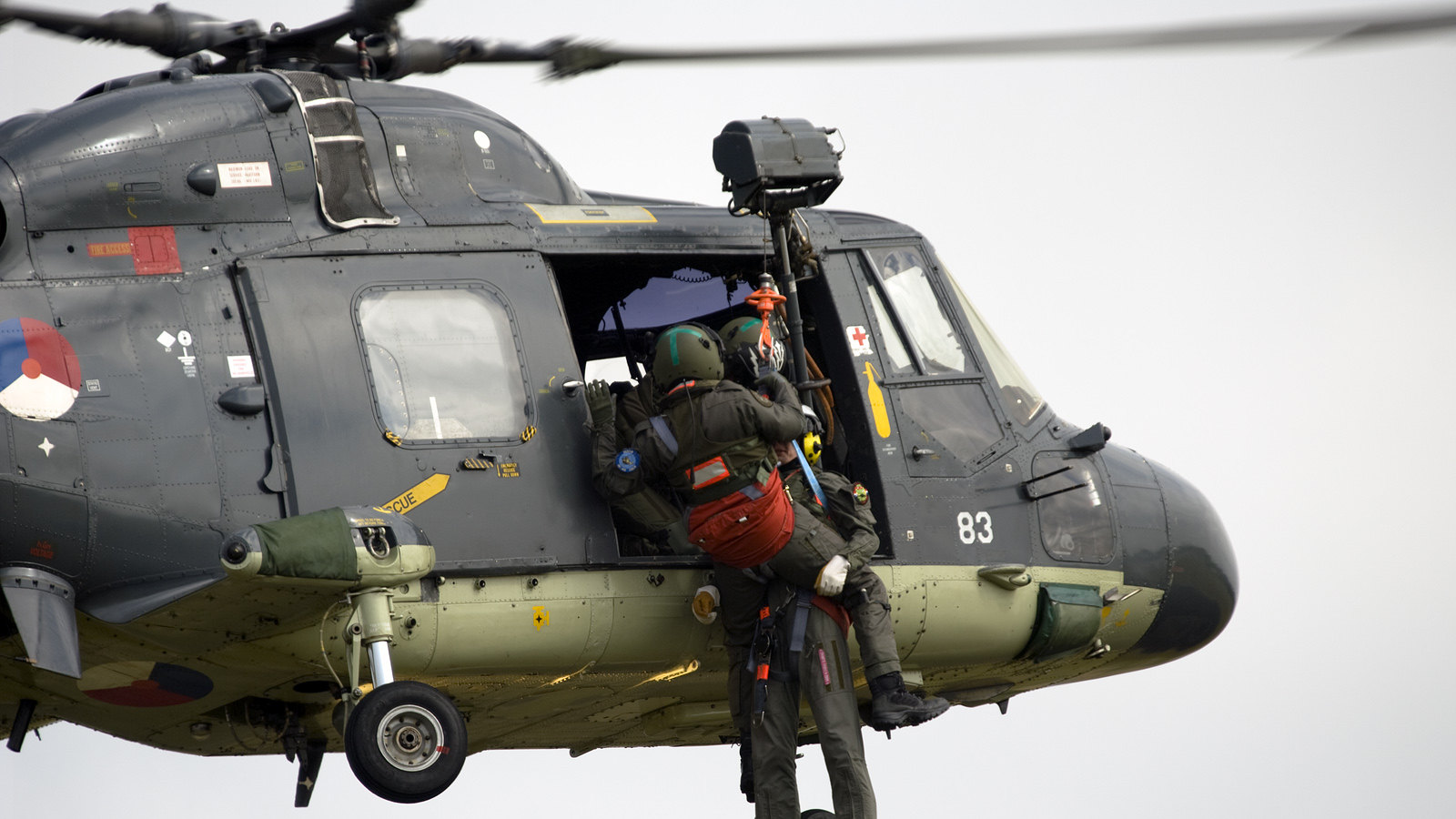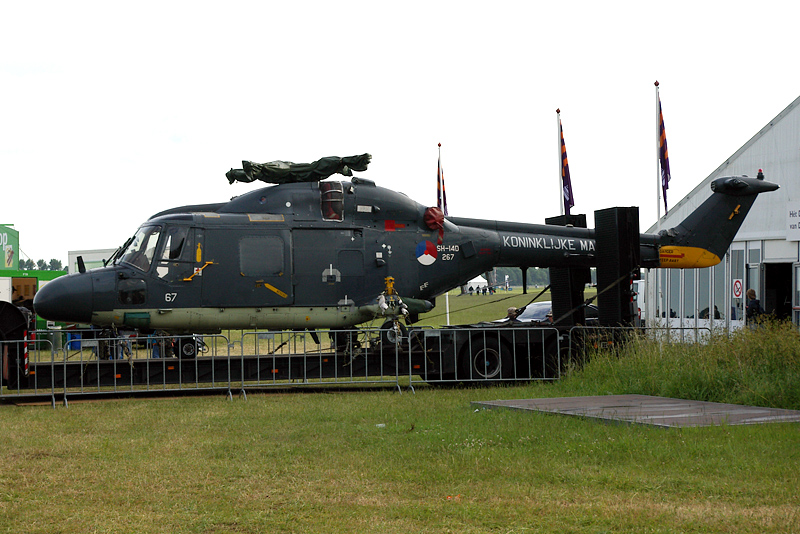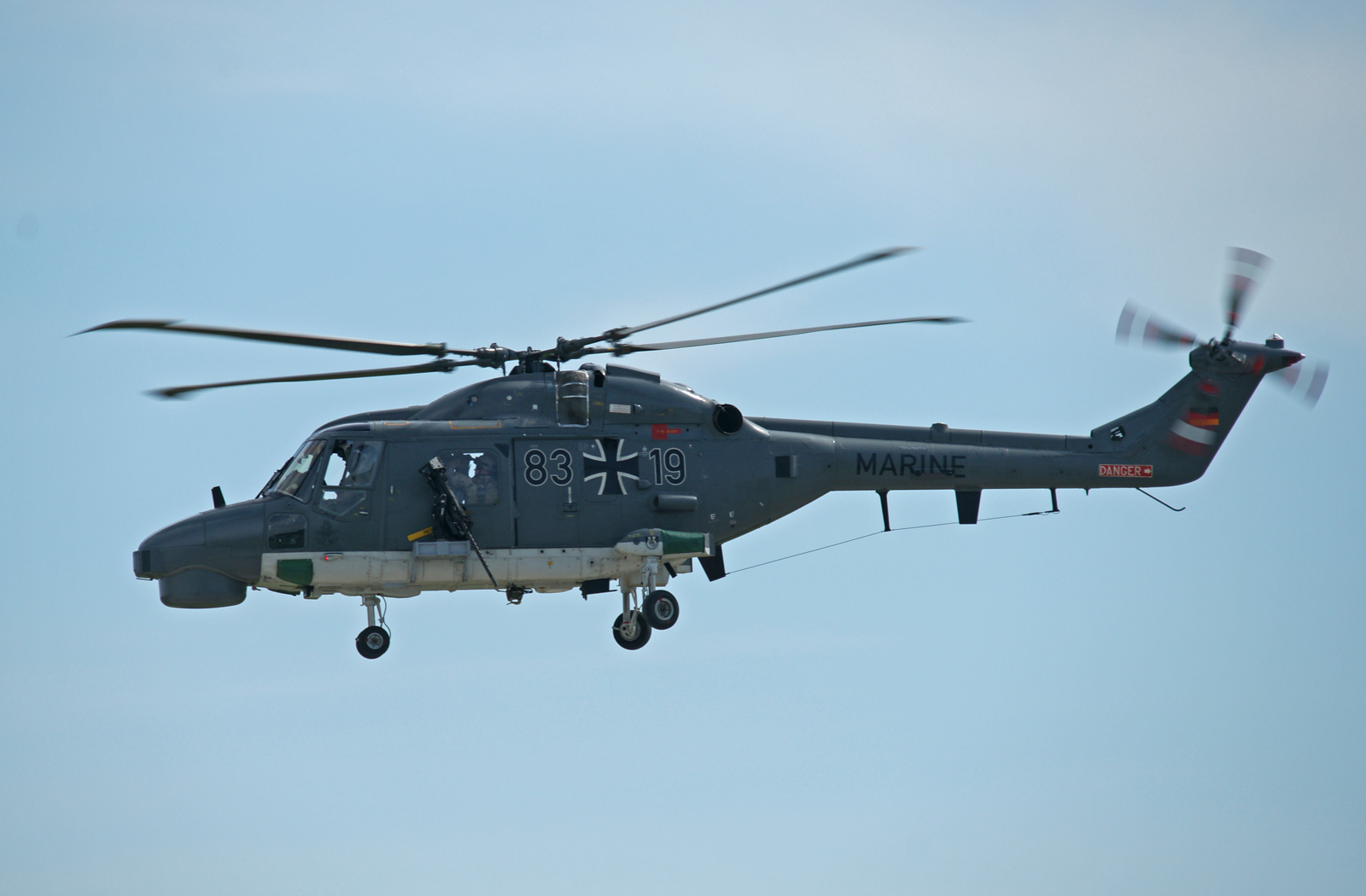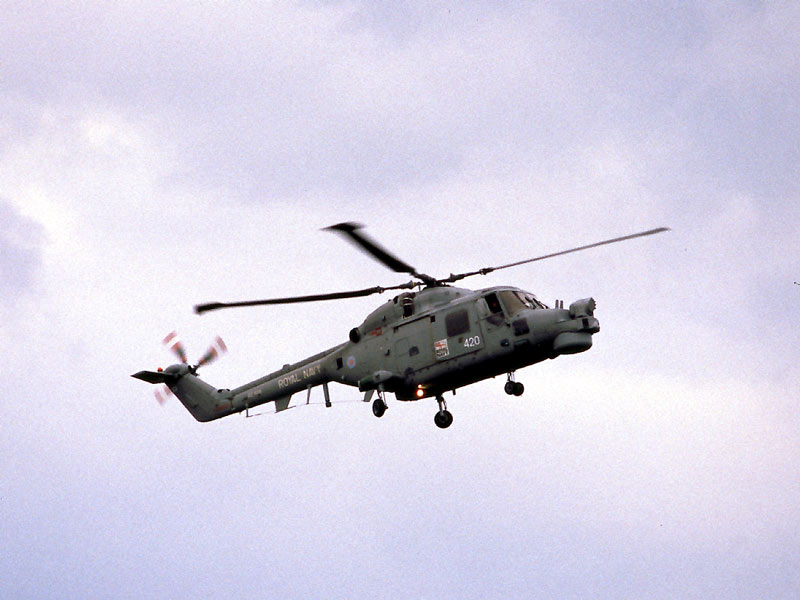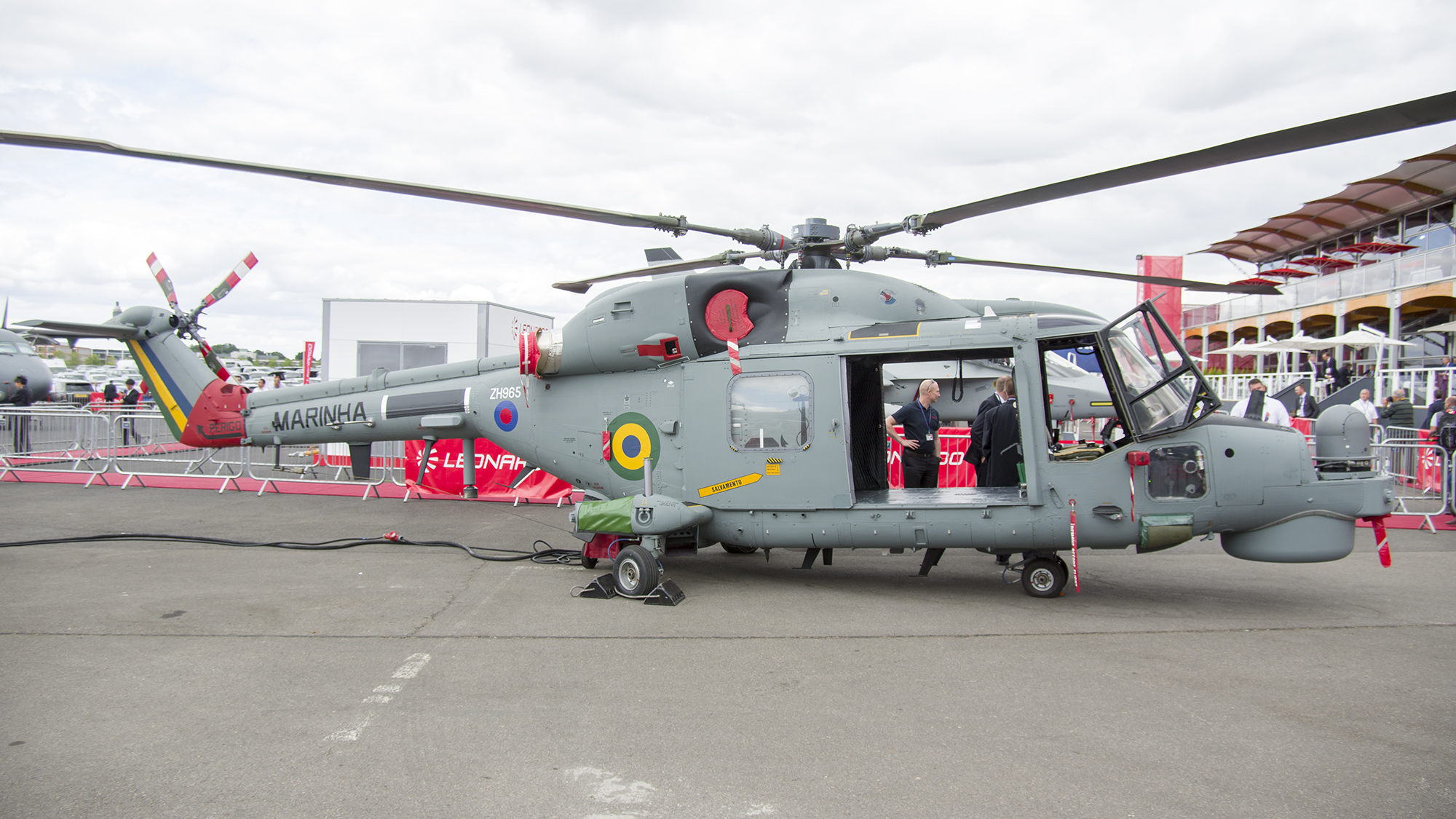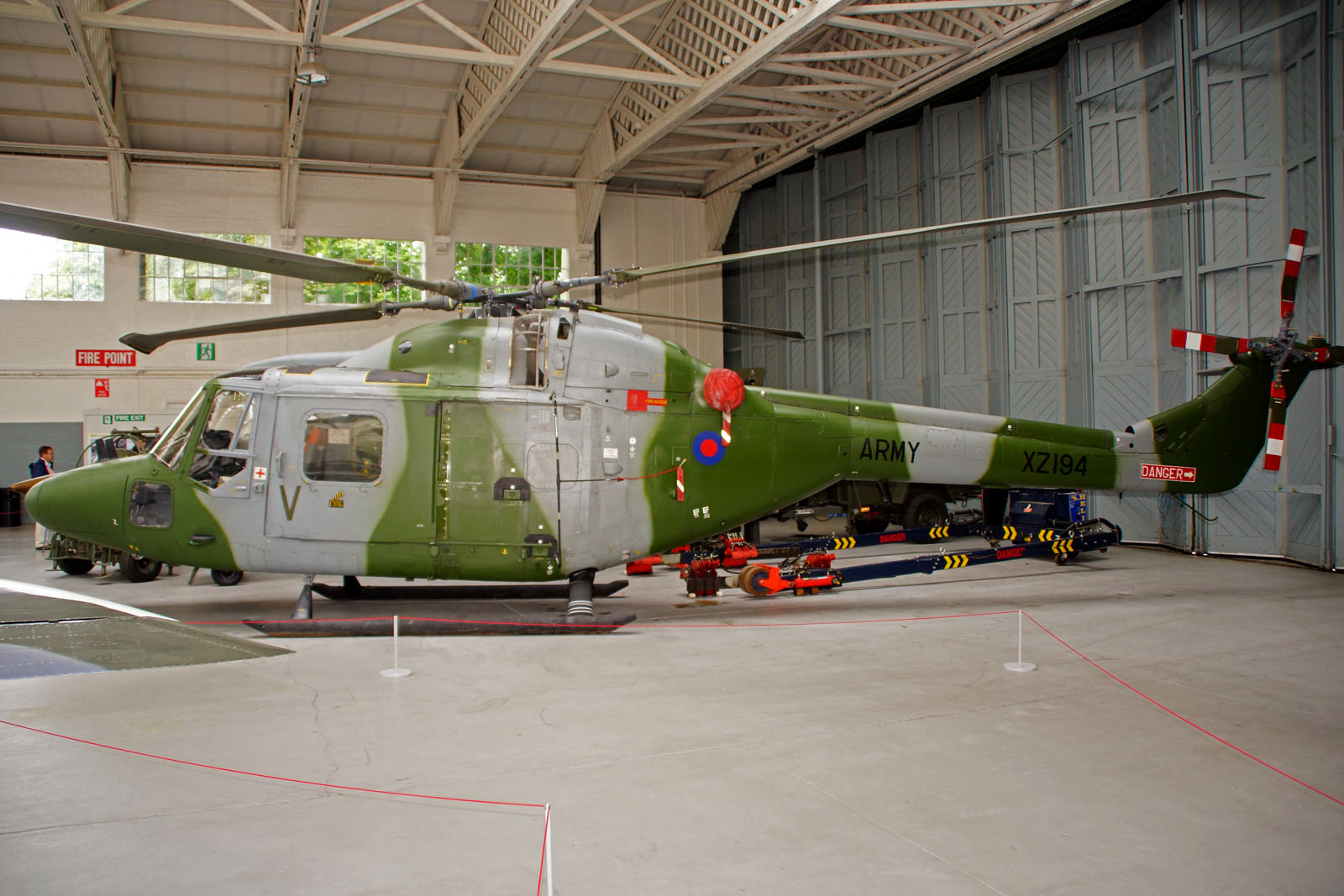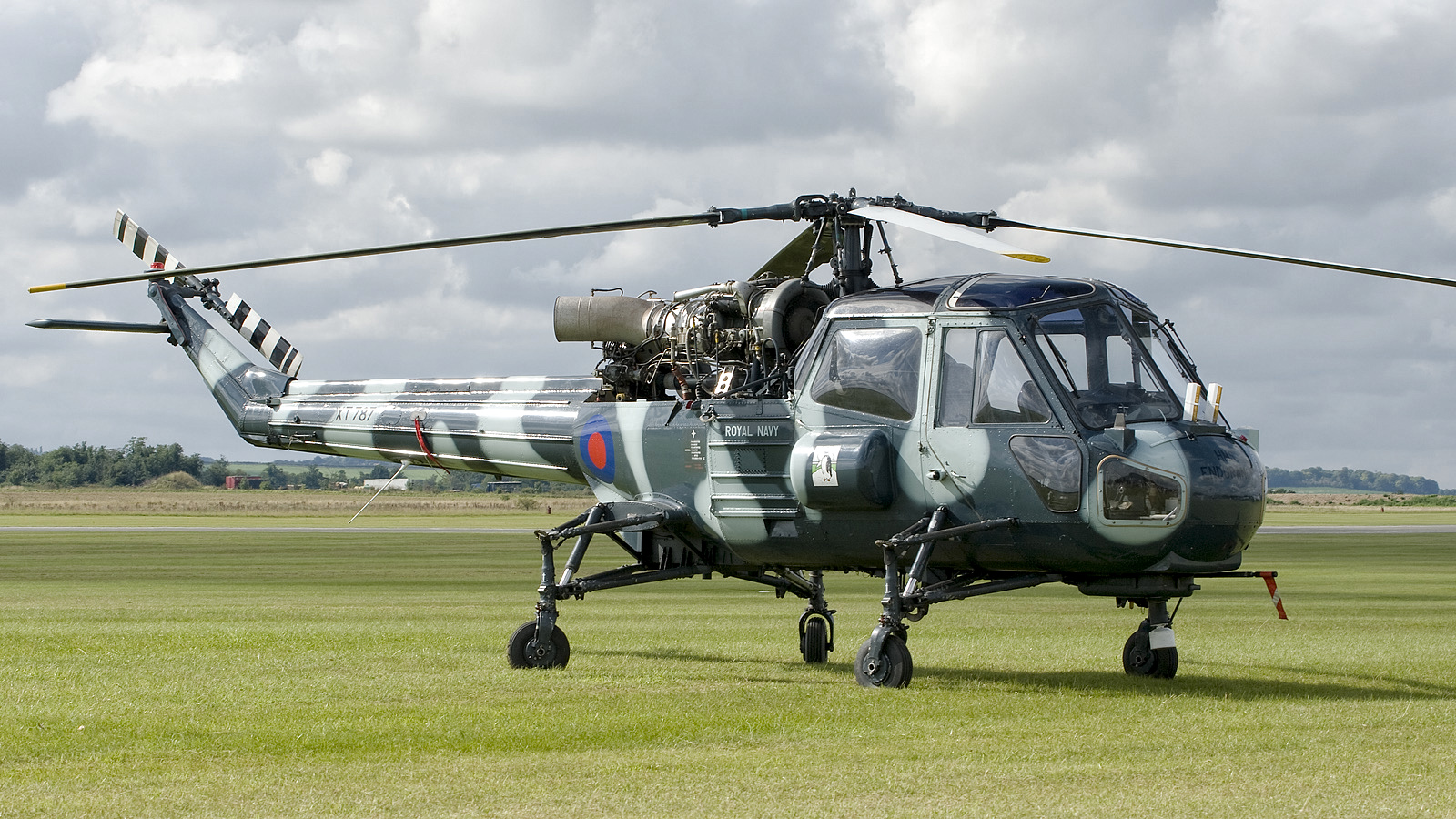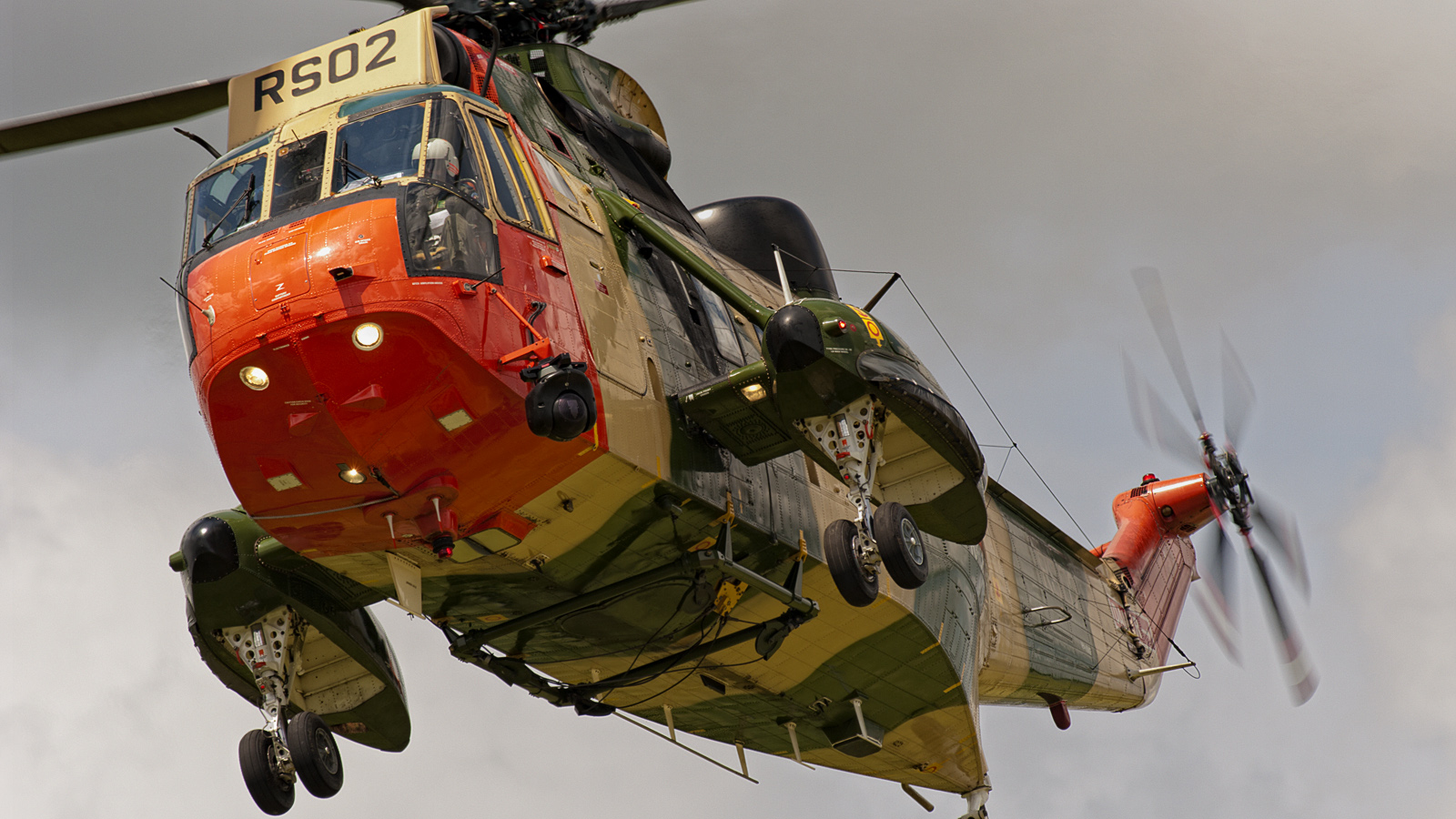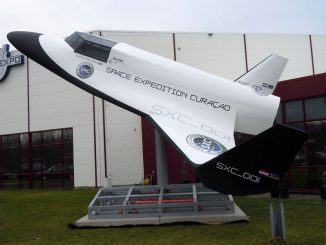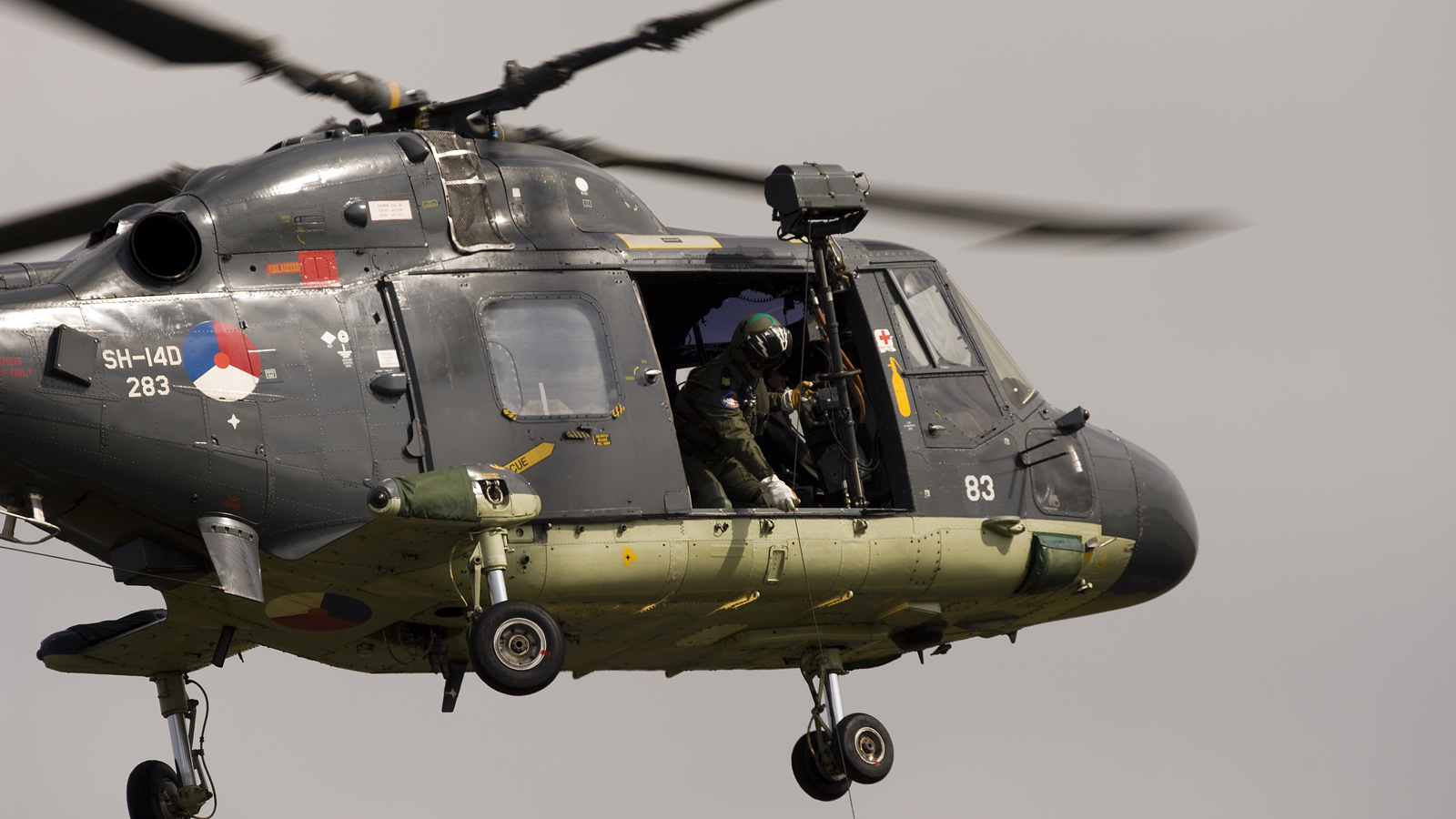
Westland Lynx is a multi-purpose military helicopter designed and built by Westland Helicopters in Yeovil, Somerset. The Lynx is its primary ship based helicopter and fulfils anti-submarine and anti-ship warfare, search and rescue, over the horizon targeting for nuclear attack submarines and communications duties.
Developing nation: United Kingdom.
Manufacturer/designer: Westland Helicopters from 2000 AgustaWestland.
Production line: Yeovil
Producet: 1978-present.
Type aircraft: multi-purpose military helicopter.
First flight: 21 March 1971.
Primary users: British Army, Royal Navy, French Navy, German Navy .
All versions of the Lynx have advanced digital flight controls plus all-weather avionics. The four-bladed semi-rigid main rotor confers a level of agility matched by no other helicopter of its generation.
Lynx AH.1
Initial production version for the British Army Air Corps, powered by 671 kW (900 hp) Gem 2 engines, with first production example flying 11 February 1977, and deliveries continuing until February 1984, with 113 built.
Westland Lynx ZB-500
A specially modified Westland Lynx ZB-500 set the absolute speed record for helicopters in 1986. The aircraft was piloted by John Egginton and reached a speed of 249.09 mph (400.87 km/h).
Lynx HMA.Mk 8
From 1994 the Royal Navy began to receive the latest version, the Lynx HMA.Mk 8. A total of 38 previous versions is being upgraded to this standard. The equivalent export version is known as the Super Lynx and orders for new-build helicopters have come from Portugal, Brazil, South Korea. The latter two customers, plus Denmark, have also had previous Lynx versions upgraded to Super Lynx standard. Operators of earlier naval Lynx variants comprise France, Germany, the Netherlands, Nigeria, Norway and Pakistan. The Marineflieger has overhauled the airframes and rotor systems of 17 of its older Lynx Mk 88s for service beyond 2010, and is also adding forward-looking infra-red and GPS.
Super Lynx 300
Super Lynx 300 is the latest generation of the world leading intermediate class maritime helicopter in service with several customers world-wide. It combines agility, compact dimensions and modern avionics to deliver high mission capability. Superb twin & single engine performance is provided by the LHTEC CTS800-4N Engines. The platform is designed with small ships operation in mind and benefits from a low centre of gravity and excellent cross & tail wind operating envelope. This is particularly of benefit to operations during challenging weather conditions and high sea states. The small footprint combined with blade and tailfold capability make this aircraft the number one choice when operating small ships where hangar and flight deck space is at a premium. Roles include anti-submarine warfare, exclusive economic zone (EEZ) protection, search and rescue (SAR), utility and troop transport.
AW159
The AW159 is the latest twin-engine multi-role, maritime and utility aircraft developed from the extremely successful AgustaWestland Lynx family of helicopters. Designated the Lynx Wildcat by the UK MOD, the AW159 is the multi-role helicopter chosen by the British Army and Royal Navy to meet maritime combatant and land utility and reconnaissance requirements. Also available to the international marketplace, the platform provides a unique significant upgrade in terms of operational capability when compared to other aircraft in its class. The platform is equipped with a comprehensive and highly capable integrated avionics suite, enabling advanced navigation, communication, theatre integration and stores management functionality. Mission sensor options include a state of the art radar, active dipping sonar for the naval variant, electro-optical imaging and electronic surveillance measures and an integrated self defence suite. With its unmatched agility and ability to rapidly change roles, coupled with the latest communications suite, the network enabled AW159 is a significant force multiplier. Fully marinised and designed for all environments, including the harshest rough sea conditions associated with ship borne operations, and equipped with modern systems designed to provide low crew workload, reliability and ease of maintenance, the AW159 delivers an advanced day/night all weather, network enabled capability to find, fix and strike.
Military operators
- Algeria – Algerian Air Force: Super Lynx 4 Mk.300 (to be delivered in 2010)
- Argentina – Argentine Navy: The Argentine Naval Aviation ordered 10 Mk.23s but only 2 were delivered before the outbreak of the Falklands War and the ensuing arms embargo imposed by the British.
- Brazil – Brazilian Navy: 12 Lynx Mk.21A
- Denmark – Royal Danish Air Force: 8 Super Lynx Mk.90Bs used for various missions. These were originally operated by the Royal Danish Navy until January 2011.
- France – French Navy: 31 Lynx HAS.4
- Germany – German Navy: 22 Sea Lynx Mk.88A
- Malaysia – Royal Malaysian Navy: 6 Super Lynx Mk.100
- Netherlands – Royal Netherlands Navy: 20 Super Lynx SH-14D. Originally received 6 search and rescue (UH-14A/Mk.25) and 18 anti-submarine warfare models (SH-14B/Mk.27 and SH-14C/Mk.81), which have all been upgraded to SH-14D standard for both SAR and ASW duties. 27 February 2011, a Lynx and crew have been captured by pro-Gaddafi forces in Libya following a failed evacuation operation. The Lynx helicopter flew from the Dutch frigate HNLMS Tromp to the Libyan city of Sirte to pick up two evacuees, but when it landed the three-man crew and helicopter was seized by an armed group loyal to the Libyan government.
- Nigeria – Nigerian Navy: 3 Lynx Mk.89 Retired from service.
- Norway -Royal Norwegian Air Force: 6 Lynx Mk.86
- Oman – Royal Air Force of Oman: 15 Super Lynx Mk.120
- Pakistan – Pakistan Navy – Pakistan Naval Air Arm: 3 Lynx Mk.3 retired from service since 2003.
- Portugal – Portuguese Navy 5 Lynx Mk.95
- Qatar – Qatar State Police
- South Africa – South African Air Force: 4 Super Lynx Mk.64.
- South Korea – Republic of Korea Navy: 12 Super Lynx Mk.99 and 13 Super Lynx Mk.99A
- Thailand – Royal Thai Navy had 2 Super Lynx 300s
- United Kingdom – British Army – Army Air Corps: 120 Lynx AH.1 / AH.5 / AH.7 / AH.9. Royal Navy – Fleet Air Arm: 80 Lynx HAS.2 / HAS.3 / HMA.8.
General characteristics
- Crew: 2 or 3
- Capacity: 10 troops
- Payload: 737 kg
- Length: 15.241 m (50 ft)
- Rotor diameter: 12.80 m (42 ft)
- Height: 3.734 m for mk7; 3.785 m for mk9 (12.25 ft for mk7; 12.41 ft for mk9)
- Disc area: 128.71 m² (1,385 ft²)
- Empty weight: 3,291 kg (7,255 lb)
- Max takeoff weight: 5,330 kg (11,750 lb)
- Powerplant: 2× Rolls-Royce Gem turboshaft, 835 kW (1,120 shp) each
Performance
- Maximum speed: 324 km/h (201 mph)
- Range: 528 km (328 miles) with standard tanks
Armament
- Naval: 2 x torpedoes or 4x Sea Skua missiles or 2 x depth charges.
- Attack: 2 x 20mm cannons, 2 x 70mm rocket pods CRV7, 8 x TOW ATGM
- General: 7.62mm General Purpose Machine Guns (AH.7 and AH.9), Browning AN/M3M .50 calibre heavy machine gun (HAS.3 and HMA.8)
All pictures courtesy of Zijde Aviation Photo and Publishing, Rob Vogelaar and Marcel van Leeuwen

